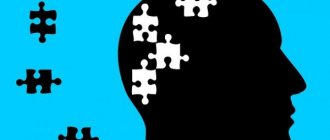Having reached the end, people laugh at the fears that tormented them at the beginning.
How to overcome fear? What it is? We will tell you a lot of useful and interesting things about this irreplaceable feeling.
Living in fear is very unpleasant, because it is essentially a cage that limits us. When we start to be afraid of something, we stop acting, withdraw into ourselves, and try to run away from frightening situations.
Before we figure out how to overcome fear, let's find out what this natural instinct is and how it works.
What is fear
Fear is an emotional state caused by real or perceived danger. Represents a protective biological reaction (the concept of fear according to the National Encyclopedia of Psychology).
The feeling of fear is an innate emotion that is needed to maintain the race and the instinct of human self-preservation.
Sigmund Freud described fear and divided it into two categories - phobia and dread. The first is pathological fear, which prevents a person from fully existing. The second is a short-term fear of something specific, which passes, and the person continues to function.
What is known about fear is that it can be both innate and acquired.
A detailed video about fear from Andrey Kurpatov with an explanation of physiological processes.
What is fear? Why is it needed? Does it help or harm?
Fear is a state of nervous excitement, which is characterized by the experience of a feeling of danger or threat. It is one of the very first feelings experienced by a person in life, and it accompanies a person throughout his entire life journey. Fear is one of the basic emotions, and this emotion is designed to protect a person in case of danger and the unknown.
Fear was characteristic of primitive man, and when he encountered some natural phenomenon or a ferocious animal, it was fear that forced him to run away, seek shelter or engage in battle in order to save his life.
But we live in the modern world, in which the main function of fear itself has faded into the background. Today we no longer need to hide from a thunderstorm, throw a spear at a mammoth, or escape from a saber-toothed tiger. However, fear takes many different forms, and in some cases it, of course, helps, but in other situations it does not play into our hands.
Types of fears
The classification of fears and their varieties are extensive.
| A type of fear. | Description. | Example. |
| Children's. | Special experiences that arise as a result of a real threat or thoughts about it. | Fear of separation from parents, injections, monsters under the bed. |
| Biological. | Occurs when there is an immediate threat to life or health. | Fear of large predators, natural phenomena, diseases. |
| Panic. | Sudden episodes of intense fear. Usually accompanied by manifestations at the physiological level (increased sweating, rapid heartbeat, shortness of breath, numbness of the extremities). | A person is afraid of open spaces and large crowds of people, but as a result of circumstances he had to find himself in a crowd. |
| Social fears. | Fear of taking part in social interaction. It borders on the fear of being ridiculed, misunderstood, humiliated. | Fear that unfavorable changes will begin in your personal life. |
| Existential. | They are not associated with specific events, but with the human essence of the individual. | Fear of space, time, the unknown of life, etc. |
| Hereditary (ancestral). | The desire to protect oneself, which arises at the genetic level, attempts to protect oneself from pain in all its manifestations. | A person is afraid of fire because one of his relatives died in a fire. |
| Anxious anticipation. | Worry and anticipation of something bad happening over several weeks or months. | Upcoming interview, session or marriage. |
| Inflated fears. | A feeling of intense fear that a person invented for himself, or someone else imposed it on him. | The girl accompanied the guy to the army, but her relatives imposed on her that he would certainly go on leave and cheat on her. Now the girl is afraid that their relationship will end. |
| Fear without reason. | A negatively colored mood that is accompanied by fear. Sometimes it may indicate a mental disorder. | Irrational fear of some thing, phenomenon or event. |
How fear works
When a person is afraid, certain hormones and molecules are produced - peptides. The physiological abilities of peptides are being actively studied by scientists. Neuropeptides can shape mental states. For example: fear, anger and fright.
The two most well-known fear hormones are adrenaline and norepinephrine. The first causes a rapid heartbeat, constricts the blood vessels of the abdominal cavity and mucous membranes, relaxes the intestinal muscles, and dilates the pupils.
The main task of adrenaline is to adapt the body to the reaction to stress. It improves skeletal muscle function. With prolonged influence of adrenaline on the body, the myocardium and skeletal muscles increase in size.
Norepinephrine is not only a hormone, but also a neurotransmitter. Like adrenaline, its level increases under stress. Increases blood pressure and constricts blood vessels. The action time is shorter than that of adrenaline.
Both hormones cause tremor (shaking in the limbs). The hypothalamus, having detected a stressful situation, releases corticotropin into the blood. When it reaches the adrenal glands, it produces adrenaline and norepinephrine.
Why are we afraid for no reason?
Fear or anxiety are groundless when there is not the slightest reason for concern. For example, a person is doing well, nothing and no one bothers him or threatens him. But a panic attack is slowly growing in my head.
Fear for no reason is the most obvious sign of anxiety disorders. Among them: generalized anxiety disorder, OCD, panic attacks. Anxiety neurosis is the mildest form. Quite often it is associated with hormonal imbalance, caused by overwork and stress.
How does anxious anticipation work?
Suspense - anxious anticipation, anxiety. In English-speaking countries, the term is widely used to describe everyday life. In Russian, it is applied exclusively to cinema, computer games, and very rarely to literature.
Suspense means an artistic effect, a particularly prolonged state of anxiety that appears when watching a film. It is also a collection of artistic techniques that are used to achieve this state. Mainly used in horror, thriller and horror games.
What are inflated fears and how to counter them
Justification of fear is possible in the presence of a real threat. Exaggerated and imaginary fears greatly oppress the individual’s freedom of action, prevent them from realizing their potential, and over time become a pattern of thinking.
Decide whether to act on your fear. The habit of justifying fear increases every day. The sooner you start fighting it, the better.
Manifestation of fears of varying intensity
There are many feelings that are directly or indirectly similar to fear. From them you can create a whole scale of the origin and growth of feelings. Degrees:
- Calm.
- Excitement.
- Anxiety.
- Fear.
- Horror.
- Panic.
| Feeling or emotion. | Definition. |
| Horror. | A feeling of intense fear that causes a person to become numb. |
| Despair. | Complete rejection of expectations and hopes, apparent hopelessness of the situation. |
| Fright. | The body's reflex reaction to a real or possible threat. |
| Numbness. | A state of stupor or immobility that occurs as a result of intense fear. |
| Suspicion. | A supposed guess that something bad or frightening is about to happen. |
| Anxiety. | A feeling of uncertainty, anticipation of terrible, unpleasant, frightening events. |
| Anxiety. | An anxious state of a person caused by fears, worries, doubts. |
| Fear. | This is a special feeling that is characterized by irrational fear or excessive persistent experiences. |
| Confusion. | A sudden disruption to routine caused by frightening or unexpected factors. |
| Confusion. | An acute psychopathic condition that combines anxiety and a feeling of misunderstanding of what is happening. |
| Fear. | A feeling of fear, anxiety or restlessness in anticipation of trouble or trouble. |
| Dazed. | A feeling caused by an unexpected event, fear, stress, joy. The condition can be positive or negative. |
What other manifestations of fear or feelings close to it do you know? Share your observations in the comments.
Treatment of fears
The best place to start treating anxiety disorders is by talking to your family doctor. During the conversation, the nature of the disease, the causes of exacerbations and relief of the disease are determined. The patient is given material that tells about the possibility of recovery, symptoms and course of the disease. If necessary, the therapist refers the person to a psychiatrist.
Why fear is not needed today, and how to overcome it
If the physical and mental symptoms are known, it will be much easier to cope. To relieve anxiety for the first time you need:
- Regular and balanced nutrition
- Limit caffeine consumption. It affects the physical symptoms of anxiety.
- Try not to drink alcohol
- Physical activity is the key to combating stress. Exercise at least 3 hours a week.
- Find a hobby and do it in your free time.
How to overcome fear
You can learn to identify fear and cope with this emotion using the Fear simulator by following the link - LINK
The effectiveness of cognitive behavioral therapy has been scientifically proven in the fight against anxiety disorders. It is based on the idea that thoughts have a huge impact on a person's feelings and behavior. The goal of treatment is to move thoughts to an area that is close to you.
Treatment helps identify and change the beliefs that lead to anxious thoughts. When a panic attack occurs, therapy allows you to identify the thoughts that contributed to the appearance of the alarming symptom. Helps change beliefs about the danger of physical symptoms (tachycardia, chest compression, etc.).
Behavioral therapy can help change the patterns of behavior that maintain anxiety disorders. Fear of public places and avoidance of them leads to disruption of your life.
Therapy helps you stop avoidance tactics. During the session, the therapist will explain how to control anxiety using breathing and relaxation techniques.
Signs of fear
The emotion of fear can manifest itself at different levels (physiological, behavioral, etc.).
| Level. | Description. | Signs. |
| Somatic. | Manifestation of emotions at the biological, physiological level. | Pale skin, increased heart rate, rapid breathing, muscle spasms. |
| Emotional. | Negative factors appear at the emotional level. | Feelings of panic, anxiety, horror. |
| Cognitive. | All a person’s thoughts are aimed at protecting himself from fear or taking control of it. | Thoughts revolve around the trigger that caused the state of fear; it is difficult for a person to switch to anything else. |
| Behavioral. | A person wants to protect himself from feelings of fear, to distance himself from the fear factor. | Flight, retreat, fight. |
Where do fears come from?
The sooner we find out the cause of this or that fear, the sooner we will get rid of it. One of the most authoritative researchers of fear, the American psychologist Sylvan Solomon Tomkins, in his studies [Tomkins, 1962-1963], names drives, emotions and cognitive processes as the causes of fear.
Drive is an instinctive desire, and it acquires psychological significance when its intensity reaches a critical level. The human brain receives a signal about an acute physiological deficit, which activates the emotion of fear.
Fear can be activated by any emotion - this is where the principle of emotional contagion comes into play. For example, the reaction of fear and arousal, due to the fact that its neurophysiological mechanisms are similar to the mechanisms on which the emotion of fear is based, can activate this fear.
Fear can also act as a cognitive assessment of the situation. For example, it may be triggered by a mental image or memory. By the way, most often it is cognitive processes that serve as a reflection of fictitious rather than real situations, as a result of which a person begins to fear something that actually does not pose any threat.
Another famous scientist, psychiatrist John Bowlby, in his work [Bowlby, 1969], points to the role of biology in the activation of fear. He calls its causes such natural danger signals as the sudden approach of an object, sudden noise or pain. He also says that fear can appear if a person is suddenly reminded of past experiences or serious mistakes.
Here are some more scientific facts: Austrian psychiatrist and psychologist Sigmund Freud insisted that both childhood and adult fears stem from unused libido. This energy of mental drives, if not used, is transformed into fear.
Famous scientists J. Strelyau, J. Reikovsky, N. D. Levitov, P. V. Bundzen, L. S. Vygotsky, V. S. Merlin, I. P. Pavlov, B. Cannon, K. Lange, W. James believed that the main cause of fear is physiological mechanisms, reflex reactions to external and internal stimuli, and disturbances in the processes of self-regulation of the functional state of the brain.
In their works one can also find references to the fact that a predisposing factor for the appearance of fear is the weakness of nervous processes, changes in living conditions, and changes in activity.
Many authors (F. D. Paner, R. D. Lifton, A. M. Prikhozhan, A. I. Zakharov and others) consider man-made factors (for example, people who survived a severe disaster are more predisposed to fear) and social factors (for example, conflicts, mass panic, etc.).
Psychologist Fritz Riemann, among the factors influencing the appearance of fears, pays special attention to the individual characteristics of a person: heredity, predisposition, individual living conditions, history of development and personality formation.
We can continue to present different points of view on the causes of fear for a very long time (we wrote in more detail on this topic in our article “Psychological foundations and known studies of fear”), and this question is worthy of writing an entire scientific work. But let scientists and other interested parties do this, and we will try to generalize and summarize what we have learned about the causes of fears at the moment
The reasons why we experience certain fears depend on the individual characteristics of each of us: gender, age, character and temperament, social environment. And conditionally, fears, based on the reasons, can be divided into several groups:
- Innate fears are fears associated with the collective unconscious and determined by the instinct of self-preservation. The causes of these fears lie in the subconscious of each of us, and it is very difficult to eliminate them.
- Acquired fears are fears that were caused by some events in the past, for example, strong feelings, fear, painful experience, etc. These fears are quite amenable to working through.
- Imaginary fears are fears associated with something that a person has never encountered. The reasons for such fears are people’s stories, media reports, and outside influence. Such fears are eliminated relatively easily.
We can also identify hidden and obvious causes of fears. A person can remember, know and be aware of obvious reasons, which means they are the easiest to eliminate. But with hidden reasons everything is more complicated, and most often they stem from childhood.
Such reasons include increased parental care or painful attachment to parents, various kinds of temptations, unmet needs, consequences of psychological trauma, unresolved problems, intrapersonal conflicts, etc.
Another category of reasons is cognitively constructed. These include such things as a feeling of loneliness, a feeling of rejection, depression, a threat to self-expression, the impossibility of self-realization, a feeling of one's own inferiority or even inadequacy, a feeling that something bad is approaching, negative thinking.
All of the above indicates that understanding and eliminating the causes of fear, as well as eliminating fear itself, is a necessary condition for maintaining a person’s mental health and developing psychological stability.
Undoubtedly, we all need fear, but only the kind of fear that serves as the basis for our well-being. Any other fears and phobias have an extremely negative impact on life and personality, and there is no doubt that they need to be fought.
Causes of fear - why we are afraid
Fear does not appear in a person just like that. Typically, a number of reasons contribute to the occurrence of this condition.
| Causes of fear. | Description. | Example. |
| Hereditary and biological. | At the physiological level, the cause of fear is a lack of gamma-aminobutyric acid in the body. Usually the substance has a sedative effect; when it is lacking, a person develops a feeling of fear. | Brain injury, long-term use of certain medications, experiencing a situation of severe stress. |
| Social. | Fears often develop under the influence of external factors that occurred in childhood. | Prolonged separation from mother, severe animal bite, loss of a loved one, prolonged stay indoors. |
| Psychological. | Incorrectly formed images in the subconscious. | Something was explained to the person incorrectly. |
Physiology of fear
Common manifestations of mental disorders are depression and anxiety disorders. The boundaries of their classification have not yet been found. Similar symptoms occur in different patients and may have different causes. Social phobia is quite difficult to give a biological explanation, because social thinking is directly intertwined with the description of the situation and people’s thoughts. At the moment, anxiety disorders are divided into 2 types. The first is biological, the second is psychological.
Two neural pathways of fear
Fear develops through two neural pathways, ideally functioning simultaneously. The first way is responsible for the development of basic emotions, has a quick reaction along with a huge number of errors. The second, on the contrary, is slow, but more accurate.
Fast way
Using the first path, a person quickly responds to signs of a threat, and this often triggers a false alarm. The second helps to give an accurate assessment of the situation and confront the danger more effectively. At this moment, the fear initiated by the first path is blocked by the work of the second, assessing some signs of danger as unreal.
The emotional stimulus in the first path closes on the amygdala nuclei of the thalamus visualis, stimulating an emotional reaction.
A long way
In the second path, the emotional stimulus, reflected in the sensitive nuclei of the thalamus, ascends to the sensory parts of the cerebral cortex and from them is sent to the nuclei of the amygdala complex, forming an emotional response.
If a person has a phobia, the second pathway works unstable, leading to the development of fear of stimuli that essentially do not pose any danger.
The benefits and harms of fear for humans
If a person faces fear, this does not mean that he will have to live with it for the rest of his life. After all, if there were no fear and uncertainty, it would be more difficult for people to survive. From this we can conclude that in some sense fear is useful.
Benefits of fear:
Saves from attacks, accidents, self-harm; this is the main positive function of fear.
It has a positive effect on muscle tone, as the hormone serotonin is produced.
A person begins to think faster and act harmoniously (but some are paralyzed by fear).
The harm of fear:
Restricts movement.
It disrupts the respiratory processes, making breathing confusing and difficult.
A person may make strange, reckless or unfounded decisions when driven by fear.
A panic attack may occur.
Some particularly impressionable people may lose consciousness.
The body becomes tight, this can cause headaches, digestive problems, insomnia, etc.
How fear affects a person
When a person experiences constant fear, physiological changes occur in the body, such as:
- constant hyperventilation of the lungs, resulting in heart disease;
- increased sweating;
- feeling of suffocation;
- insomnia.
The most serious consequences of phobias are panic attacks.
When fear arises, life opportunities are sharply limited. For example:
- avoidance of social contacts;
- restricting yourself (in food, on airplanes, in visiting crowded places and events);
- refusal of relationships due to fear of loss, betrayal;
- fear of changing something in life (hated job, abusive relationship);
Remember: even if everything collapses, there is always a way out. And the life experience you gain will help you with this. There are no hopeless situations.
From time to time, fear not only does not interfere, but on the contrary, it helps. You have a fear of losing your job, and you start working hard to prevent this from happening. The fear of getting a bad grade or failing a session makes you strain your brain. True, this is individual. For some, phobias are a reason not to stop, to continue working. And for others - a reason to fall into a stupor. Irrational fear hinders development, it is necessary to get rid of it.
The benefits and harms of fear
Fear and fear can both save and destroy. In an emergency situation, with a real threat to life, fear saves, although in practice this is often not the case. If a person begins to have a panic attack, he will completely lose control over himself and his actions, which can lead to death. Therefore, you need to get rid of fears in any case.
How is fear useful?
For some people, fear causes an expanded perception of space, sharpening vision, hearing, and smell. Under critical circumstances, fear can reduce the recognition of small details, while increasing the ability to distinguish blurry or large objects. With changes in perception, the chance of survival increases.
With the help of fear, a person better senses possible danger. Fear is a warning about an approaching threat:
- If a person does not know how to swim, he is afraid to go deep.
- Fear of animals can scare away dangerous beasts. Because the animal's sense of smell is more susceptible to hormones released into the air.
- If you are afraid of heights, a person will never go near a cliff or the edge of a tall building.
The Harm of Fear
In addition to the reasons given above, fear manifests itself in the following:
- temporary paralysis;
- abdominal pain (nausea);
- headache (dizziness, fainting);
- cry.
The psychological consequences of fear include distracting and intrusive thoughts. A person may feel different emotional effects, such as:
- hatred;
- anger;
- despair;
- numbness;
- lostness.
Another type of fear, known as a phobia, in which a person experiences an intense, sometimes irrational fear of a place, object, or animal. Often, the fear experienced during a phobia is much less than the real threat.
Prolonged or severe fear causes stress, anxiety, and other mental problems. There is a type of fear in which people are afraid of something that is unlikely to ever happen. For example, being struck by lightning. While others are afraid of more realistic threats, robbery or murder.
You can learn to identify fear and cope with this emotion using the Fear simulator by following the link - LINK
Directions for Fear Research
Psychologists have studied the phenomenon of fear from various points and directions, and it is interesting to track it.
Psychoanalytic
The founder of psychoanalysis is Sigmund Freud. Connected fear with feelings of attraction. The reason is sexual desires that were once repressed by the individual or his immediate environment .
Freud tried to structure the human psyche, dividing it into “I”, “It” and “Super-ego”. The “I” is usually covered by fears of a biological nature (pain, falling, attack). The “super-ego” may be afraid of the surrounding reality, thoughts about the future or upcoming actions. “It” is subject to neurotic fears.
Freud's ideas were further developed by the American researcher Karen Horney. She believed that the cause of all fears was unresolved conflicts.
Existential
The existential approach was first proposed by Viktor Frankl. He believed that emotion is closely related to the feeling of expectation . A person is afraid of something and waits for a reaction, which is later realized or not realized. Symptoms of a state of anticipation can only intensify fear and inflame it.
Frankl considered fear as a factor that helps avoid unpleasant situations. On the contrary, if a person looks his fear in the face, then the emotion will gradually begin to disappear and will be defeated.
Behavioral
The founder of behaviorism was the American John Watson. In his opinion, fear does not arise just like that; it is activated by certain stimuli (sudden loud sound, blow, push) .
A person has innate stimuli that provoke fear, but over the course of life this list expands (fear of a certain animal, fire, darkness).
According to Watson's conclusions, a person develops many fears during the first years of his life.
Another proponent of behaviorism, Burres Frederick Skinner, believed that fear needs reinforcement, and reinforcement can be positive or negative .
Positive reinforcement allows fear to flourish and develop. Negativity causes conflicting feelings, therefore, in order not to experience them again, a person will try to overcome his own fear.
What is the point of fighting fear?
Surely you yourself have already concluded that it is, of course, impossible to live without fear. If it were not there, we would cease to feel dangers and threats, we would not be afraid of anything, which means we would begin to underestimate the real world, which can be very unpredictable. The result of all this would be, at a minimum, serious trouble, and at maximum, death.
So why should we fight fear? In fact, everything is very simple: if you do not take into account the fear that saves us from real danger and death, but consider only those fears and phobias that interfere with life (fear of public speaking, fear of success, fear of intimacy with people, etc. .), fighting them will automatically make our lives better.
By overcoming ourselves and ceasing to be afraid of something, we become stronger as individuals, reveal internal reserves, expand our comfort zone, develop intelligence, gain a lot of useful knowledge and skills, as well as a huge number of opportunities that did not exist before.
A trivial example: you have always dreamed of becoming a speaker and since childhood you have fantasized about speaking in front of a huge audience, talking about something important and interesting for you and the public. But here’s the problem: you are seized with horror and panic when at least five people are looking at you at the same time. As a result, you cannot fulfill your dream, do what you are passionate about.
Start working with this fear. Even if not immediately, but after a while you will stop being afraid of being in front of people and will be able to gradually begin to master the basics of public speaking. And if you continue, your dream will turn into a real goal that you can completely achieve.
And many such examples can be given. But the most interesting thing is that the principles of dealing with fears are in most cases the same. It is enough to learn a few rules and techniques, and your life will begin to transform. And the first step towards getting rid of fears is understanding their causes.
When to seek help from a psychologist
Among people who love the feeling of fear, there are also adrenaline junkies. They constantly risk their own lives; if they give up this dangerous occupation, they begin to feel sad and depressed. Some of these people may need the help of a professional psychologist.
It is believed that such people take risks instead of love, communication, and the desire to enter into a relationship.
There are also people who believe that adrenaline junkies subconsciously strive for death. This is a very controversial opinion, but a person should talk to a specialist, otherwise the problem of fear and its incorrect implementation can lead to tragic consequences.
Video about ADME and find out what you are afraid of.
What are inflated fears and how to counter them
Many modern fears are regularly fueled by the media and the Internet, which can lead to “social panic.” As a rule, this panic does not correspond to a real threat.
“A typical example: for some reason people are afraid of getting sick from the Zika or Ebola virus, although the same influenza virus is statistically more likely and also dangerous. Millions die from it every year, but we still don’t take it seriously, but we extol and fear “exotic” infections.
This state of affairs is directly related to the activities of the media, which shape public opinion, but are not always able to understand the issue.
Today you can also find out: 6 important and interesting facts about HIV
The same applies to the fear of gluten, genetically modified foods and vaccinations: a “reason” arises in the information space, and then people pick it up and begin to speculate on it.
The problem of “inflated fears” is very acute, and, perhaps, the only way to combat this phenomenon is education . Then there is a chance that these fears will fade into oblivion, like the fear of witches, red-haired women and black cats in their time.
How to get rid of fear - techniques and exercises
The feeling of fear is useful, but sometimes it can really ruin a person’s life. For example, fear of dogs prevents you from moving around the city calmly, visiting dog-loving friends, and feeling safe. But there are techniques and techniques to help overcome fears.
AWARE technology
The author of the method is A. Beck. It helps to cope well with obsessive and anxious thoughts. The meaning of the exercise is deciphered as follows:
- A cknowledge & Accept - To be aware of and accept the problem.
- W atch – Look at fears from the outside.
- A ctions – Act despite your anxiety.
- R repeat – Repeat the required number of times.
- E xpect - Expect an improvement in your condition.
The steps are worth considering in more detail:
- Realize and accept. There is no need to give up your own feelings and convince yourself that they don’t exist. You should allow yourself to feel fear, anxiety, worry, irritation.
- A look at fears from the outside. Observe your thoughts and feelings, but do not evaluate them. It's like things come and go.
- Act. Try to behave in life as if fears have long been overcome and are a thing of the past. However, you should not try to solve the problem through avoidance.
- Repeat as many times as necessary. The previous point must be repeated until the new thinking takes root in the mind and the person begins to feel confident.
- Expect improvements. It is important to be completely confident in yourself, hope only for the best, but never rush things.
Diary
The previous practice is best done in a diary. Describing each step, especially the second.
Before you start working with your fear, we recommend answering a few questions in your diary:
- What is my situation now? Describe what you like and dislike about your behavior regarding fear.
- How do I want it to be? Describe your goal, namely what you will be like and how your life will change after working through the emotion.
- What will I do in the next month? Describe your actions, what techniques and exercises you will do, what changes in your behavior, what useful habits you will add, etc.
Every day, share your thoughts with your diary, note what went well and what didn’t, what was difficult and what was easy. Analyze, draw conclusions and correct behavior.
It's good if you share your observations in the comments. This will help you structure your thoughts and figure out what’s not working. And of course it will motivate other participants to meet their fear.
What is the use of fear?
Fear can serve a person’s benefit, but only when it is directly related to the situation and proportionate to its scale, i.e. not exaggerated. In such cases, it would be much worse if there was no fear, because if we feel danger, it makes us think whether it is worth taking this or that step.
The body's functions are mobilized, and as a result we are ready for unforeseen developments. At some point, we find ourselves as if paralyzed, and this allows us to orient ourselves, think about our actions, calculate our strengths and decide what to do next: run, hide, resist something.
Hence the conclusion that fear does not need to be drowned out. On the contrary, you should listen to it in order to cope with extreme situations. And another advantage of fear is that it reminds us that life passes and will end someday. This motivates us to live it more consciously and fully, and forces us not to put off important things for later.
Fear also promotes self-knowledge. He seems to say that we are responsible for everything that happens to us, indicates that our life is fragile, and therefore we must rely only on ourselves and our own strengths. We ourselves are the architects of our own happiness and we owe it to ourselves to take an active part in our lives. But what about the other side of the coin?
This is what the psychology of fear says about their varieties.
Psychology identifies the 29 most common forms of fear. They, in turn, are divided into 3 categories:
Delusional fears. The cause of their occurrence cannot be traced. For example, it is not clear how to explain a child’s fear of putting on socks. Such phobias often act as a sign that a person has some kind of mental disorder. Often such a person becomes or is already a patient in a neurosis clinic.
Overvalued fears arise on the basis of some ideas. Often such ideas become a kind of prism through which everything that happens is passed through. Usually some life situation affects a person so strongly that its meaning for him then changes dramatically.
Obsessive fears. A person begins to experience fear only under a certain combination of circumstances. Often there are fears such as:
- fear of climbing and being at heights (hypsophobia);
- fear of open spaces (agoraphobia);
- fear of closed and cramped spaces (claustrophobia).
It is not fear itself that leads to such disorders, but the fear of it. The personality itself mentally plays out the most unfavorable scenarios for the development of events. It is the possible consequences (pain, suffering, deprivation) that frighten her. And the strongest fears eventually become phobias.
How to deal with fears?
Today, an incredible amount of research and literature is devoted to the problem of combating fears. This includes both scientific and popular science literature - books by such authors as Alex Novak, Nick Vujicic, Itzhak Pintosevich, Igor Mann, Josh Waitzkin, Tom Peters, Brian Tracy, Bodo Schaefer, Robin Sharma, Irvin Yalom and others.
These people not only proved by their own example that it is possible to overcome even the strongest fears, but also taught this to millions of other people around the world. This means that you are also able to make your own personal breakthrough on the path to a happy, harmonious and successful life without fears and anxieties.
How to deal with fears? To get you started, we want to offer you some powerful advice from Lissa Rankin, MD, physician, speaker, blogger, artist, founder of several online health and wellness communities, and author of several best-selling books, including the popular Healing Fear.
Tips for dealing with fears from Lissa Rankin
The tips presented below are taken exactly from the above-mentioned book and, if you wish, you can find it to learn more about everything. We will offer them in abstract form:
- You should not be ashamed or afraid of fears. They must be overcome, resisted. One of the best ways to fight this is to meet your fears halfway, to confront them face to face.
- You don't need to count on instant results. The path to fighting fears is not easy, but it is worth it. If you are developing a plan of action to eliminate fear, be aware that it may take a long time to implement.
- Imagine that you are not afraid. Pretend like you're not scared. When faced with something that frightens you, imagine yourself playing a role in a movie or on stage. This technique will help you trick your brain into believing that you really aren’t scared.
- Don't worry about the future. Such fears are least justified. Remember that you create your own future, and you need to live and take care of the present. Don't create non-existent problems by worrying about something that may not exist.
- Accept the fact that life is cyclical. It consists of white, gray and black stripes. There will always be difficulties and problems, but they should not be feared, but solved. You must move forward confidently and boldly, believing that you can do anything.
- Understand the reasons for your fears. The roots of many fears stretch back to childhood. One of the rules for working with fears is to understand what exactly can be their cause. Having established the cause, it will be much easier to get rid of fears.
- Realize the benefits of fear. Think about the fact that perhaps your fears are well founded, and they can play into your hands. Try to find something positive at least in part of your fears.
- Relax and work with emotions. Tension contributes to the development of fears. One of the ways to work through it is relaxation, as well as replacing negative emotions with positive ones. Learn to work on yourself and your conditions.
In addition to these recommendations, Lissa Rankin also offers a small plan for healing from fears. Here's what she recommends doing with any fear:
- Optimize your thinking - stop focusing on the bad and focus on the good. Various approaches contribute to this: staying in nature, relaxation, meditation, listening to music, immersing yourself in dreams - look for what you like, what brings positive emotions.
- Find people who will support you, talk to them about what worries you. Plus, try to give support to people yourself.
- Start being attentive to your body and its signals. At the same time, develop your intuition and learn to listen to your inner voice.
- Be sure to find the reason for your fears.
- Create your own “recipe for courage.” What this means is that you need to detail your goals and how you will achieve them. Various goal setting techniques are suitable for this (at the end of the article we will provide links to several of them).
- Learn to concentrate on life “here and now”, and as you achieve your goals, focus not on the result, but on the process of work.
As we said, you can read more about all this in Lissa Rankin's book, Healing Fear. And we will continue the conversation by presenting another technique that allows you to work through a variety of fears. It's called eye movement desensitization and reprocessing, and it was developed by American psychologist and psychotherapist Francine Shapiro.
Francine Shapiro's technique for dealing with fears
In general, when talking about the desensitization technique, people most often mean the method of systematic desensitization by Joseph Wolpe. But we talked about it in the article of the same name, and here we are considering another option.
The eye movement desensitization and reprocessing (EMDR) method is based on a special algorithm. Keep in mind that to get a noticeable effect, i.e. To significantly reduce the level of fear, Francine Shapiro recommends at least ten sessions of 30-60 minutes each. For the session you will need to find a secluded place where nothing and no one will distract you.
Then everything is done like this:
- Sit up straight and straighten your shoulders, looking straight ahead.
- Recall in every detail the situation or place where you were as calm and confident as possible (let this place be called a “safe place”).
- Find two points to your left and right that you can see by moving only your eyes (your neck remains motionless).
- Remember something that makes you worry, worry, or fear (memory, situation, person).
- Think about this situation and begin to move your eyes so that either the left or the right point appears in your field of vision in turn (the pace should be comfortable for you).
- Make 24 to 36 eye movements, and then return to a “safe place”, distract yourself from negative thoughts and try to understand your well-being and bodily sensations (think about what and in what part of the body worries you, what thoughts and images arise in your mind ).
- Make a new set of eye movements while thinking about what causes fear. At the same time, notice your bodily sensations.
- Do the same number of repetitions and finish the exercise.
After completing the exercise, think about what the relationship may be between your thoughts, bodily sensations and fears. Consider what meaning there might be in this relationship, as well as in your fears.
The exercise is aimed at assessing and revising your internal state and attitude towards fear, as well as towards yourself. But it also has another effect - the moment you feel fear again, imagine yourself in your “safe place”. If you have previously performed the exercise regularly and with concentration, you will definitely feel calm, and the influence of fear will decrease many times over.
And in addition to this, we want to share a few more exercises for working through any fears - from standard to the most unusual (and here we recommend reading another of our articles - “Interesting and unusual facts about fear”, from which you will learn a lot of interesting and useful things about this emotion).
Exercises to combat fears
Below we offer three exercises for working with fears. And the first will be special breathing exercises.
Breathing exercises for fear
Lie down on a hard surface and start breathing deeply (if you can’t lie down, just take a comfortable position). Try to remember how you breathe before you fall asleep or immediately after waking up. As a rule, such breathing is barely noticeable, and it is very slow. Begin to slow down your breathing, gradually making it quieter, slower and more imperceptible. Once you get into the rhythm, continue breathing in this manner. Within a few minutes, feelings of anxiety and fear will begin to subside.
Why does breathing like this relieve fear? This is explained by the fact that a person who is able to slow down his breathing as much as possible should not be afraid of anything at all, because any fear is a transformed fear of death, and death is the cessation of breathing. It turns out that if you don’t breathe, then you are not there, and since you are not there, that means you are not afraid.
If we explain this from the standpoint of science, then when breathing in the body begins to slow down, all metabolic processes are inhibited. As a result, adrenaline stops actively flowing into the blood, and this, in turn, reduces excitement and anxiety. The exercise itself can be performed both to work through constant fears and to eliminate fear at a specific point in time.
Exercise "Cinema"
This exercise is suitable for working through persistent fears. We draw your attention to the fact that the exercise we are describing is a slightly modified variation of the original “Cinema” exercise, developed by psychologist and candidate of medical sciences V. N. Pugach. You can find the original on the Internet.
So, you need to remember your fear or some traumatic memory from life that constantly bothers you. Now imagine that you come to the cinema. Start looking at the screen - they are showing a black and white film with your participation. In this episode you are doing something neutral.
Now, as it were, separate yourself from yourself and try to see yourself from the outside - how you sit and look at the screen. Stay “beside yourself” and look at the screen with a black and white film. But in this episode you are already experiencing the very experience that you want to get rid of.
Further on in the film you see how everything returns to normal - in the new episode you no longer experience any fear or worry. At this point, stop the movie and move into your image on the screen. Make this image in color and rewind it. In the image of the main character, relive the situation without experiencing negative experiences.
You can repeat the last action several times. Then you must leave the cinema and return to reality. Remember your fear or experience to check the result. If you did everything correctly, the problematic situation will no longer cause you feelings of fear and anxiety.
Exercise “Draw your fear”
An excellent exercise for working through constant fears. Prepare paper and colored markers or pencils. Think about what you are afraid of, label it with a specific word, imagine an image and draw it. Give free rein to your imagination and don’t limit yourself to anything. As you draw, keep track of your thoughts and feelings.
Next you need to destroy your fear. You can do this in several ways:
- burn your drawing and scatter the ashes;
- tear up the drawing and throw away the trash;
- complete the picture, turning it into something funny or kind;
- come up with your own little ritual.
Remember: you must perform the exercise and especially the final stage consciously, completely immersed in the process. After you complete your ritual, analyze your state and think about how you feel when you think about your fear, whether you managed to weaken it, whether it scares you now. Unpleasant sensations should become less intense, and with regular exercise they may completely disappear.
This exercise belongs to the field of art therapy - a modern and effective area of working with psychological problems. Methods in this area are specially developed by professional psychologists and allow you to work through a variety of conditions - from anxiety to depression.
The concept of the category “fear”. Research on fear theories
Fear, like a shadow, has haunted man since time immemorial. Primitive man, who was constantly exposed to danger, also had it. But his fear was of an instinctive nature, arising in immediate danger to the life of both the person himself and his immediate environment. Fear is an integral link in the evolution of the human race, because... it prevented reckless and impulsive actions that were too life-threatening.
In modern civilizations, there is an ever-increasing number of objects, events, conditions, situations that are frightening or could potentially be frightening. This is probably what explains the fact that fear is the subject of scientific research and knowledge more often than any other emotion.
Fear is an emotion that arises in situations of threat to the biological or social existence of an individual and is aimed at the source of real or imagined danger.
Fear is a powerful emotion that has a noticeable effect on an individual's perception, thinking and behavior. Compared to other emotions, it has the most restraining effect. With fear, perception is limited and a person becomes functionally unresponsive. Fear can slow down your thinking and make it narrower in scope. It leads to muscle tension, and when terrified, the subject can become stunned and completely motionless. Fear greatly reduces the number of degrees of freedom in behavior.
Unlike pain and other types of suffering caused by the real action of life-threatening factors, fear arises when they are anticipated. Depending on the nature of the threat, the intensity and specificity of the experience, fear varies in a fairly wide range of shades (apprehension, fear, fear, horror). If the source of danger is uncertain or unconscious, the resulting state is called anxiety. Functionally, fear serves to warn the subject about impending danger, allows one to focus attention on its source, and encourages one to look for ways to avoid it. When fear reaches the intensity of affect (panic fear, horror), it is capable of imposing behavioral stereotypes (flight, numbness, defensive aggression). In human social development, fear acts as one of the means of education: for example, the formed fear of condemnation is used as a factor in regulating behavior. Since in society the individual enjoys the protection of legal and other social institutions, a person’s increased tendency to fear is deprived of adaptive significance and is traditionally assessed negatively. Formed fear reactions are relatively persistent and can persist even with the understanding of their meaninglessness. Therefore, cultivating resistance to fear is usually aimed not at getting rid of a person, but at developing the ability to control oneself when it is present. Inappropriate fear reactions are observed in various mental illnesses.











